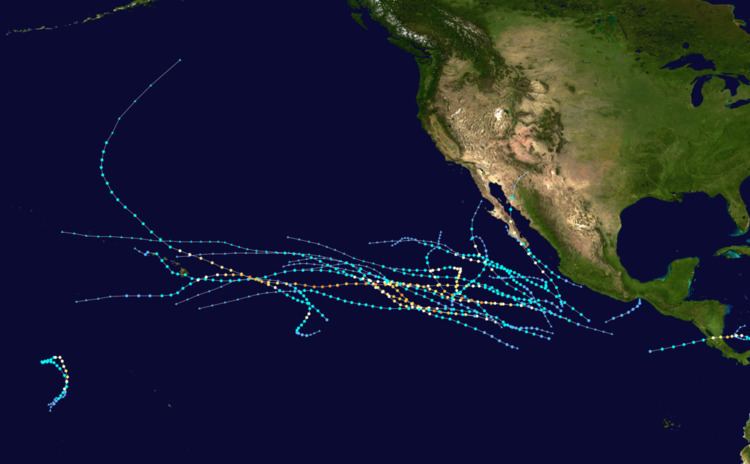 | ||
The 2016 Pacific hurricane season is an ongoing event in the annual cycle of tropical cyclone formation, in which tropical cyclones form in the eastern Pacific Ocean. The season officially started on May 15 in the eastern Pacific—east of 140°W—and on June 1 in the central Pacific—between the International Date Line and 140°W—and will last until November 30. These dates typically cover the period of each year when most tropical cyclones form in the eastern Pacific basin. However the first storm, Pali, formed 5 months before the official start of the season on January 7, which broke the record for having the earliest forming storm within the basin.
Contents
So far, seven tropical depressions developed, six of which became tropical storms. Four of the tropical storms reached hurricane strength, with two achieving major hurricane intensity. With the formation of Estelle, the season has had record amount of named storms in July, with six.
Four time zones are utilized in the basin: Central for storms east of 106°W, Mountain between 114.9°W and 106°W, Pacific between 140°W and 115°W, and Hawaii–Aleutian for storms between the International Date Line and 140°W. However, for convenience, all information is listed by Coordinated Universal Time (UTC) first with the respective local time included in parentheses. This timeline includes information that was not operationally released, meaning that data from post-storm reviews by the National Hurricane Center is included. This timeline documents tropical cyclone formations, strengthening, weakening, landfalls, extratropical transitions, and dissipations during the season.
January
January 1
May
June
July
July 2
July 3
July 4
July 5
July 6
July 8
July 10
July 11
July 12
July 13
July 15
July 16
July 17
July 18
July 19
July 21
July 22
July 24
July 25
July 26
July 27
July 28
August
August 3
August 5
August 7
August 8
August 9
August 18
August 19
August 20
August 21
August 23
August 24
August 25
August 26
August 27
August 28
August 29
August 30
August 31
September
September 4
September 5
September 6
September 7
September 11
September 12
September 13
September 15
September 16
September 17
September 18
September 19
September 20
November
November 13
November 14
November 25
November 26
November 30
